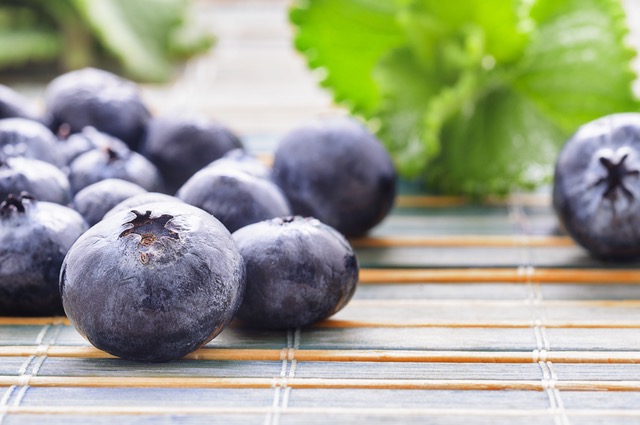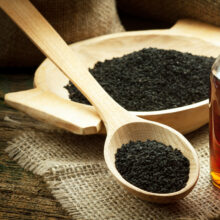Superfoods: The Once-overlooked Blueberry Takes Center Stage
- Published: Monday, April 17th 2017
- in Nutrition

Poor little blueberry: ignored for years because it had relatively low levels of vitamin C. But then the benefits of antioxidant phytonutrients were discovered and it turned out blueberries were a super food-rock star, packed with incredibly high levels of antioxidant phytonutrients, non-vitamin, non-mineral food components that help our body cells communicate with each other more efficiently.
Today, nutritionists and dieticians consistently rank blueberries in their top 10 superfoods lists and tout the many benefits. So take that, apples and oranges–you may be well known but you don’t measure up to the mighty blue.
Why so super?
Researchers say blueberries have so many phytonutrients that they provide as much antioxidant protection as 1,733 IU of vitamin E and more than 1200 milligrams of vitamin C.[1] Blueberries are also packed with potassium and vitamin K, a not too shabby dose of vitamin C, fiber, manganese and other anti-inflammatory antioxidants, which many nutritionists believe may lower the risk of heart disease, high blood pressure and cancer.[2]
Native to North America, wild blueberries were an important part of diets of the first Americans. The most obvious difference between wild and cultivated blueberries is that the wild version is approximately one half the size– and because the most valuable nutrients are in the skin, a cup of wild blueberries can have almost twice the blueberry skin, equaling twice the antioxidant power.[3]
Should you buy organic?
The savvy researchers at the Environmental Working Group analyzed pesticide residue testing data from the U.S. Department of Agriculture and the Food and Drug Administration to develop rankings for 48 common fresh fruits and vegetables. The items are ranked worst to best and a low number means more pesticides: domestic blueberries come in at 17, while imported blueberries are 20. Based on this objective data, we recommend buying organic and local whenever you can.
 How to eat them: let us count the ways
How to eat them: let us count the ways
When it comes to blueberries, the question isn’t how can you eat them but rather, how can’t you eat them? Blend into a smoothie. Top your cereal or cottage cheese or spread on toast. Use as a glaze or sauce on chicken or fish. Mix with quinoa in a power bowl or toss in salad. And then there are cobblers, muffins, crepes, pies, flatbreads and yes, pizzas. (For ideas, check out these recipes from the Blueberry Council.)
One of our favorite ways to end a dinner party is serving this flavorful and healthy Blueberry Mousse from award-winning Cal-a-Vie Health Spa in Vista, California.
The power of blue
Blueberries are delicious, healthy and easy to eat, and consuming these nutrient powerhouses may prevent disease. Rich in antioxidants, blueberries are also said to be great for glowing skin, and when used topically, they fade spots and discoloration and can help reduce breakouts and acne.
And even if blueberry season is over in your part of the world, frozen blueberries work the same wonders as fresh berries. We agree with nutritionists who say this small but mighty berry is an excellent choice for one of your five portions of fruit and vegetables a day.
[1] Superfoods RX, “Blueberries–SuperFood.”
[2] WebMD. “ Superfoods Everyone Needs.”
[3] Superfoods RX, “Wild vs, Cultivated Blueberries.”



